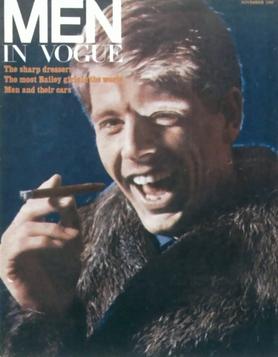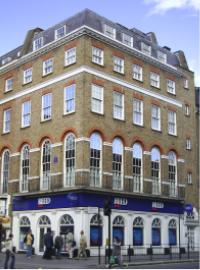
"A Day in the Life" is a song by the English rock band the Beatles that was released as the final track of their 1967 album Sgt. Pepper's Lonely Hearts Club Band. Credited to Lennon–McCartney, the opening and closing sections of the song were mainly written by John Lennon, with Paul McCartney primarily contributing the song's middle section. All four Beatles played a role in shaping the final arrangement of the song.

Worldwide, the British rock band the Beatles released 12 studio albums, 5 live albums, 51 compilation albums, 36 extended plays (EPs), 63 singles, 17 box sets, 22 video albums and 53 music videos. In their native United Kingdom, during their active existence as a band, they released 12 studio albums, 1 compilation album, 13 EPs, and 22 singles. The early albums and singles released from 1962 to 1967 were originally on Parlophone, and their albums and singles from 1968 to 1970 were on their subsidiary label Apple. Their output also includes vault items, remixed mash-ups and anniversary box-sets.

Carnaby Street is a pedestrianised shopping street in Soho in the City of Westminster, Central London. Close to Oxford Street and Regent Street, it is home to fashion and lifestyle retailers, including many independent fashion boutiques.

Apple Corps Limited is a multi-armed multimedia corporation founded in London in January 1968 by the members of The Beatles to replace their earlier company and to form a conglomerate. Its name, pronounced "apple core", is a pun. Its chief division is Apple Records, which was launched in the same year. Other divisions included Apple Electronics, Apple Films, Apple Publishing and Apple Retail, whose most notable venture was the short-lived Apple Boutique, on the corner of Baker Street and Paddington Street in central London. Apple's headquarters in the late 1960s was at the upper floors of 94 Baker Street, after that at 95 Wigmore Street, and subsequently at 3 Savile Row. The last of these addresses was also known as the Apple Building, which was home to the Apple studio.

Tara Browne was a London-based Irish socialite and heir to the Guinness fortune. His December 1966 death in a car crash was an inspiration for the Beatles' song "A Day in the Life".

Hapshash and the Coloured Coat was an influential British graphic design and avant-garde musical partnership in the late 1960s, consisting of Michael English and Nigel Waymouth. It produced popular psychedelic posters, and two albums of underground music.

I Was Lord Kitchener's Valet is a clothing boutique which achieved fame in 1960s "Swinging London" by promoting antique military uniforms as fashion items.

Cad and the Dandy is an independent tailoring company based in London, England with premises on Savile Row, in the City and New York City, that sells bespoke suits.
This is a summary of 1967 in music in the United Kingdom.
Dudley Edwards is an English painter, draughtsman and applied artist specialising in illustration, textiles, ceramics, murals and photography.

Men in Vogue was a British magazine of male fashion from the same publishers as Vogue. It was first published in 1965, and ceased publication in 1970. The magazine was closely associated with the "peacock revolution" in English men's fashion in the 1960s for which Christopher Gibbs, an editor of the shopping guide in Men in Vogue, was a style leader with his "louche dandyism". Other editors of the magazine were Robert Harling and Beatrix Miller.
Michael Sean O'Dare Rainey was an Australian-born British fashion designer, best known for his 1960s London boutique, Hung On You.

Alfred Charles Walter "Freddie" Hornik was a Czech-born British fashion entrepreneur who bought the ailing Chelsea boutique Granny Takes a Trip at 488 Kings Road in 1969, and transformed it into a leading brand in Swinging London.
Kenneth Malcolm John Crittle was an Australian fashion designer and retailer, a co-founder of Dandie Fashions in 1966.
Alan Holston was a British fashion entrepreneur, one of the co-founders of Dandie Fashions, a Chelsea boutique that was a key part of Swinging London.
Neil Winterbotham was a British fashion entrepreneur and one of the founders of the London fashion boutique, Dandie Fashions.
Gene Krell is an American fashion entrepreneur, designer, and journalist. Krell is the international fashion director for the Japanese editions of Vogue and GQ, the creative director for the Korean editions of Vogue, Vogue Girl, and W, as well as a creative consultant to Allure and GQ Korea.
Sibylla's was a nightclub in the West End of London that operated from 1966 to 1968. It was located at 9 Swallow Street, on the edge of Mayfair and close to Piccadilly Circus. The club's launch on 22 June 1966 was attended by many artists and celebrities, including the Beatles, members of the Rolling Stones, Michael Caine, Julie Christie, David Bailey and Mary Quant. Like the Ad Lib and the Scotch of St. James, the club was a popular meeting place for rock musicians and other artists until trends changed in the London scene.











